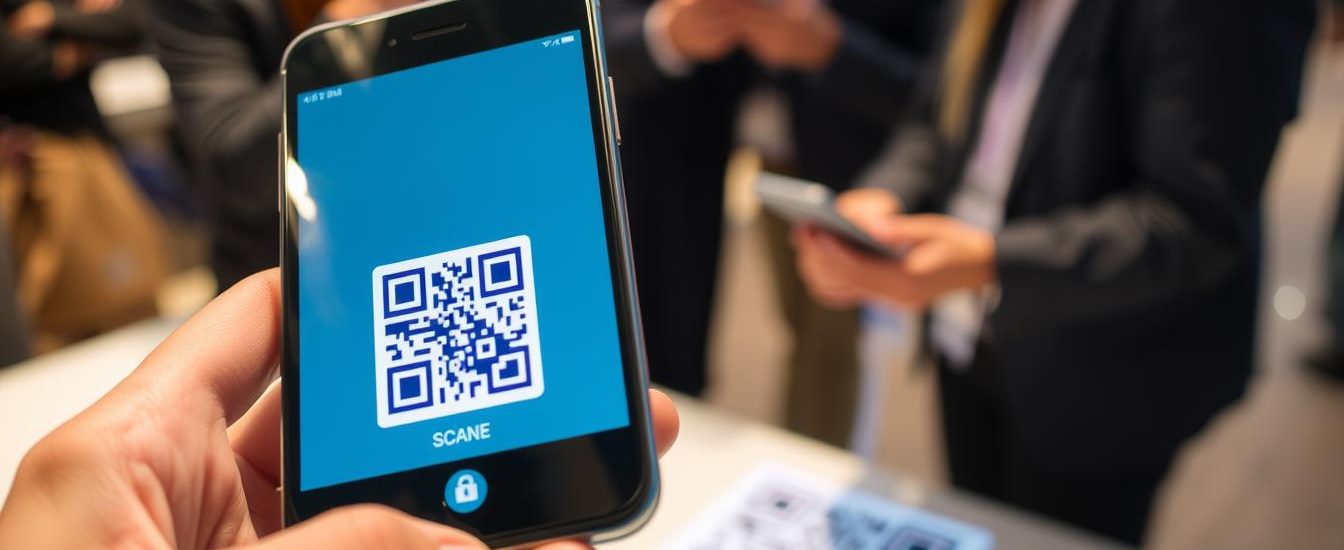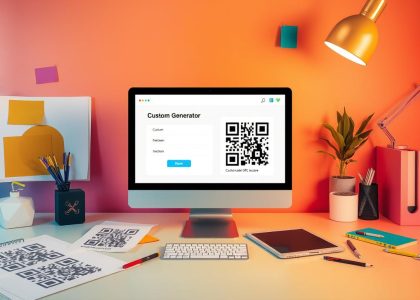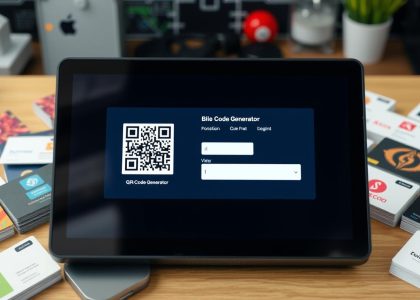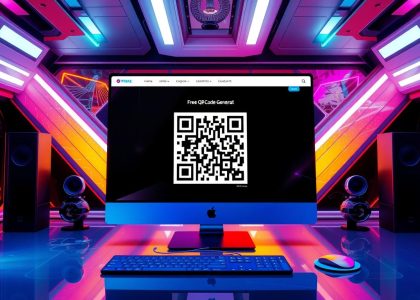Quick Response (QR) codes are everywhere, from product packaging to business cards. They might look scary at first, but reading them is easy. This guide will cover the basics of QR codes, the tools you need, and how to use your smartphone or other devices to read them.
Key Takeaways
- QR codes are a type of barcode that can store a variety of information, including website links, contact details, and more.
- To read a QR code, you’ll need a QR code reader app or a smartphone with a built-in QR code scanning feature.
- Proper positioning, lighting, and focus are crucial for successfully scanning a QR code.
- Many modern smartphones have built-in QR code reading capabilities, making the process simple and convenient.
- QR codes have a wide range of applications in business, personal, and educational settings.
Understanding QR Codes: What They Are and How They Work
QR codes, or Quick Response codes, are a special kind of barcode. They can hold a lot of digital information in a small, two-dimensional space. These decode qr codes have changed how we share and access information. They make it easy to link the physical and digital worlds together.
The Basic Structure of QR Codes
QR codes are made of a grid of black square dots in a unique pattern. This pattern holds the data the QR code wants to share. It can be text, URLs, contact info, or even multimedia. The design of QR codes lets them be scanned and qr technology decoded by readers or smartphone cameras. This gives users instant access to the information.
Different Types of QR Code Information
- Website URLs: QR codes can quickly take users to specific web pages or mobile apps.
- Contact Information: QR codes can hold phone numbers, email addresses, and social media profiles.
- Calendar Events: QR codes can add event details to a user’s calendar.
- Multimedia Content: QR codes can link to audio, video, or images, allowing users to access media with a scan.
How QR Codes Differ from Traditional Barcodes
Traditional barcodes are one-dimensional and can only store a little information. QR codes, being two-dimensional, can hold a lot more data. This makes QR codes more versatile and barcode reader useful in many ways. Also, QR codes can be scanned from any direction, unlike traditional barcodes which need a specific orientation.
| Feature | Traditional Barcodes | QR Codes |
|---|---|---|
| Dimension | One-dimensional | Two-dimensional |
| Data Capacity | Limited | Significantly more |
| Scanning Direction | Specific orientation required | Scannable from any direction |
Essential Tools You Need to Scan QR Codes
Scanning QR codes is now easy in our daily lives. This is thanks to qr code scanner and mobile qr scanning on our phones. You can check event details, pay with your phone, or get digital info quickly.
Your smartphone is key for QR code scanning. Most phones, Android and iOS, can read QR codes right away. Just point your camera at a QR code, and the info shows up on your screen.
If your phone can’t read QR codes, or you want more features, there are many apps. These qr code scanner apps let you scan lots of codes at once. They also let you create your own QR codes.
- Use your phone’s camera and QR code scanner.
- Try qr code scanner apps for more features.
- For special needs, use dedicated QR code readers.
| Device | Scanning Capabilities | Advantages |
|---|---|---|
| Smartphone (Built-in) | Basic QR code scanning | Convenient, always available |
| Dedicated QR Code Reader | Advanced scanning features | Faster, more reliable, can handle high volumes |
| QR Code Scanner Apps | Enhanced scanning experience | Customizable actions, batch scanning, and more |
Choosing the right tool for qr code scanner and mobile qr scanning makes life easier. It lets you access digital content and make tasks simpler.
How to Read QR Code: Step-by-Step Instructions
Scanning QR codes is easy, but getting it right can make a big difference. Whether you’re using a smartphone, tablet, or a dedicated QR code reader, these simple steps will help you unlock the information in those square barcodes.
Positioning Your Device Correctly
First, hold your device steady and keep it 4-8 inches from the QR code. Make sure the whole code fits in your camera frame. Don’t block any part of the code with your fingers or other things. Also, keep the camera lens clean and clear for the best scan.
Dealing with Lighting and Focus Issues
Good lighting is key for scanning QR codes. Don’t scan in direct sunlight or very dark places. It can mess up your camera’s view of the code. Try to scan in a well-lit area or adjust the lights around the QR code. Also, tap the screen to lock the focus before scanning.
Troubleshooting Common Scanning Problems
- If the QR code doesn’t scan, try moving closer or farther away to find the optimal distance.
- Ensure the code is not damaged, dirty, or obstructed in any way.
- Check if your device’s QR code reading feature is enabled and up-to-date.
- If you’re using a third-party scanning app, make sure it’s compatible with the QR code you’re trying to scan.
By following these steps, you’ll learn how to how to read qr code and scan qr codes with ease. You’ll unlock the information and convenience they offer.
Built-in QR Code Readers on Modern Smartphones
QR codes are everywhere today. Luckily, many smartphones now have a qr code reader built-in. This makes it easy to scan and use these codes. It’s changed how we get info and connect online.
Using mobile qr scanning on iOS and Android is easy. Just open the camera app or QR code scanner. Point your phone at a code, and the info shows up on your screen.
Unlocking the Power of Integrated QR Scanning
Smartphones now have qr code reader tech in their cameras. You don’t need a special app anymore. Just open the camera, point at a QR code, and see the link.
This makes using QR codes quick and easy. It’s made our digital lives better. Now, QR codes are a big part of our daily tech use.
Navigating the Nuances of QR Code Scanning
While using a qr code reader is simple, some things can affect it. Lighting, camera focus, and QR code quality matter. Knowing these can help you scan better.
QR codes are getting more popular. Having a qr code reader on your phone is key. It lets you easily explore the digital world and find lots of useful info.
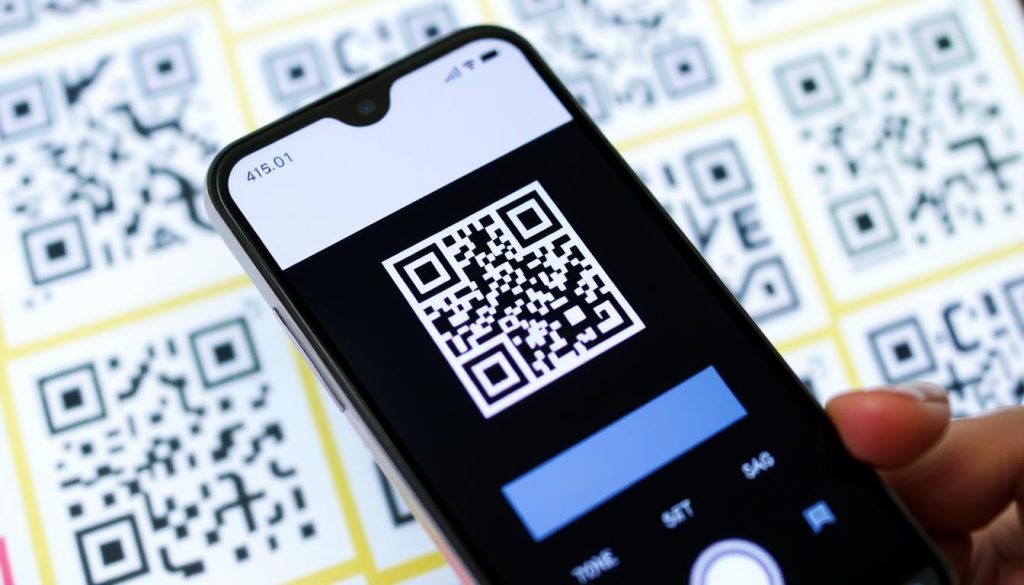
Best QR Code Scanner Apps for Android and iOS
In today’s digital world, QR codes are everywhere. They make it easy to get information, pay bills, and more. To use QR codes to their fullest, you need a good QR code scanner app. Luckily, there are many great choices for both Android and iOS users.
Top Free QR Code Reading Applications
Looking for a free QR code scanner? There are many great options out there. Here are some of the best free QR code apps:
- Google Lens – This AI-powered app scans QR codes fast and does lots of other cool things too.
- Kaspersky QR Scanner – It’s safe and easy to use, and you can save and share codes easily.
- Barcode Scanner by Zxing Team – It’s simple and just works well for scanning QR codes.
Premium QR Code Scanning Features
If you need more from your QR code scanner, there are paid apps with extra features. Here are some top picks:
- QR Code Reader by Scan – It lets you save and manage codes, and even connects to online services.
- QR Code Reader Pro – It scans QR codes from far away and works well in low light.
- QR Code Pro – It has lots of features, like making custom QR codes and tracking scans.
Whether you want a free or paid QR code scanner, there’s something for everyone. These apps help you get the most out of QR codes.
Safety Tips When Scanning QR Codes
QR codes are handy, but you must be careful when using them. As a qr code reader, knowing the risks is key. This way, you can scan safely and protect your device and info.
Identifying Suspicious QR Codes
Not every QR code is safe. Watch out for codes in odd places, that look tampered with, or from unknown sources. If a qr code reader seems off, don’t scan it.
- Check the QR code for tampering signs, like peeling edges or blurriness.
- Be careful with QR codes in public, as they might be phishing or malware.
- Don’t scan codes from unknown or shady sources, like flyers or posters.
Protecting Your Device and Information
When you scan qr codes, you let your device access the code’s info. To stay safe, follow these steps:
- Choose a trusted QR code scanning app.
- Keep your device’s security software updated and running.
- Don’t use QR codes for sensitive info, like login details or bank accounts.
- Be cautious with QR codes that ask for personal info or permissions.
By being alert and following these tips, you can use QR codes safely. This way, you’ll enjoy their benefits without risking your device or personal info.
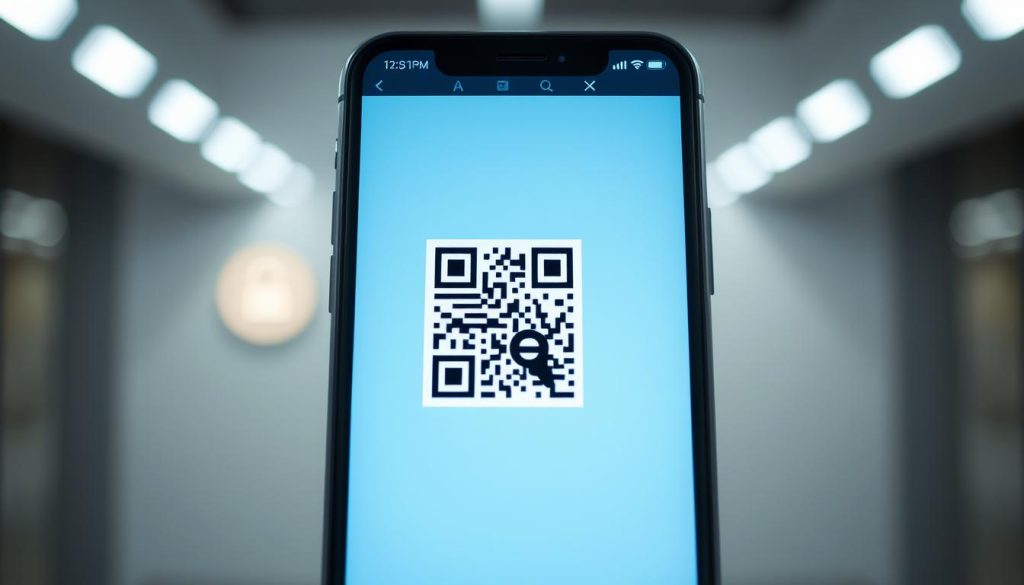
Common Uses of QR Codes in Daily Life
QR codes are everywhere in our lives, from work to personal use. They connect the digital and physical worlds smoothly. This makes our lives easier and more connected.
Business Applications
QR codes are a big deal in business. They help companies market better, make transactions faster, and share product info easily. You see them on products, in stores, and ads.
They let customers check reviews, buy things online, or follow brands on social media. It’s all about making things more convenient for them.
Personal and Social Uses
QR codes are also used in our personal lives. People use them to share contacts, connect on social media, and get special content. They’re great for events too.
At events, QR codes help with registration, schedules, and special features. They’ve also changed how we exchange digital business cards, making it greener and more efficient.
Educational Purposes
QR codes are big in schools too. Teachers use them to give students quick access to online resources and learning materials. You’ll find them on textbooks and classroom displays.
They help students explore their studies further with just a scan. It’s a great way to make learning more interactive.
As qr technology and quick response codes grow, so do their uses. They’re changing how we do business and live our lives. QR codes are now a key part of our daily routines, making information more accessible and fun.
Troubleshooting Common QR Code Reading Issues
Decoding QR codes can sometimes be a challenge, but with the right troubleshooting techniques, you can overcome common obstacles. One of the most frequent issues is device compatibility – not all smartphones and tablets are equipped with built-in QR code scanners. In such cases, you may need to download a dedicated QR code scanner app to successfully read the codes.
Another common problem is the quality of the QR code itself. If the code is faded, damaged, or printed on a poor-quality surface, your device may have trouble scanning it. Try repositioning your device, adjusting the focus and lighting, or even cleaning the QR code to improve the scan. Environmental factors like glare, shadows, or interference can also interfere with the scanning process.
If you’re still having trouble decoding a QR code, consider checking the device’s camera permissions. Make sure the code is not too small or too large, and verify that the code is not expired or otherwise invalid. With a little troubleshooting and patience, you’ll be able to decode QR codes with ease and unlock the valuable information they contain.


